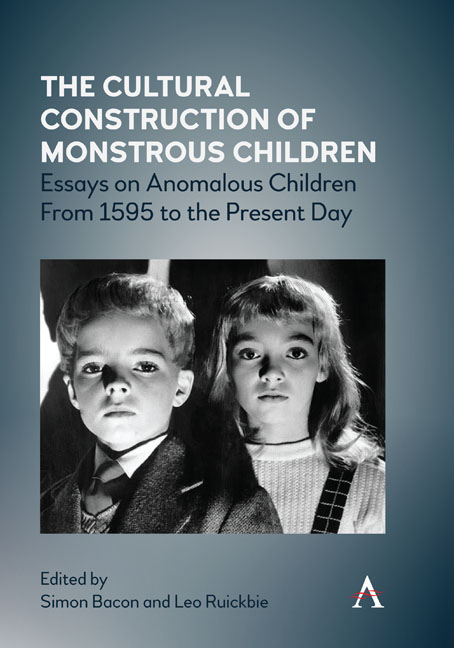 The Cultural Construction of Monstrous Children
The Cultural Construction of Monstrous Children Book contents
- Frontmatter
- Contents
- List of Illustrations
- Acknowledgements
- Introduction
- Part I Historical Case Studies
- Part II Factual Anxiety in Fictional Representations: The Undead Child
- Part III Factual Anxiety in Fictional Representations: The Monstrous Child
- Part IV Cultural Categorization in the Past, Present and Possible Future
- Notes on Contributors
- Index
Chapter Twelve - Doli Incapax: Examining the Social, Psychological, Biological and Legal Implications of Age-Related Assumptions of Criminal Responsibility
Published online by Cambridge University Press: 20 January 2022
- Frontmatter
- Contents
- List of Illustrations
- Acknowledgements
- Introduction
- Part I Historical Case Studies
- Part II Factual Anxiety in Fictional Representations: The Undead Child
- Part III Factual Anxiety in Fictional Representations: The Monstrous Child
- Part IV Cultural Categorization in the Past, Present and Possible Future
- Notes on Contributors
- Index
Summary
The Reality of Violence Committed by Children
There was shock and disbelief in 2014 when the public heard a child barely escaped with her life after two 12-year-old girls lured her to the woods and stabbed her 19 times. These 12-year-olds are reported to have planned the attempted murder since December 2013. Public outrage increased when one of the girls claimed she had done this to impress a fictional horror character called Slender man. Slender man is an urban legend/cult figure of unknown origin, which is paranormal in nature, and is said to kill. This incident raised a host of questions, not least of which was about how two 12-year-old girls could be capable of such a crime. Was media violence or fantasy literature implicated since this same girl also claimed to want to impress the Harry Potter character Voldemort, seeming to believe he was real? Millions have read and enjoyed J. K. Rowling's Harry Potter series without committing violence in reaction, which raises the issue regarding the direct contribution of media to these acts of violence and murder. If that were the case, it is likely there would be many more committing atrocities in the name of Voldemort, for example; yet, that does not occur. These young girls’ crime is not entirely unique or as unusual as society would like to believe. For example, in 2014, a 12-year-old boy admitted that he stabbed a 9-year-old to death. Again in 2014, a 14-year-old girl fatally stabbed her 11-year-old sister 40 times and then tried to cover up her crime by claiming the presence of an intruder. A 10-year-old boy was recently arrested for murder, and reportedly will be tried as an adult for beating a 90-year-old woman to death. He indicated he only intended to hurt her. While details are sketchy it has been reported he hooked a wooden cane around her neck and jammed it into her throat; he also punched her in the throat and stomach. Her death, a result of injuries sustained during the beating from the boy, was ruled a homicide.
Establishing possible causes, influences and contributing factors for these types of crimes is critical.
- Type
- Chapter
- Information
- The Cultural Construction of Monstrous ChildrenEssays on Anomalous Children from 1595 to the Present Day, pp. 193 - 204Publisher: Anthem PressPrint publication year: 2020


